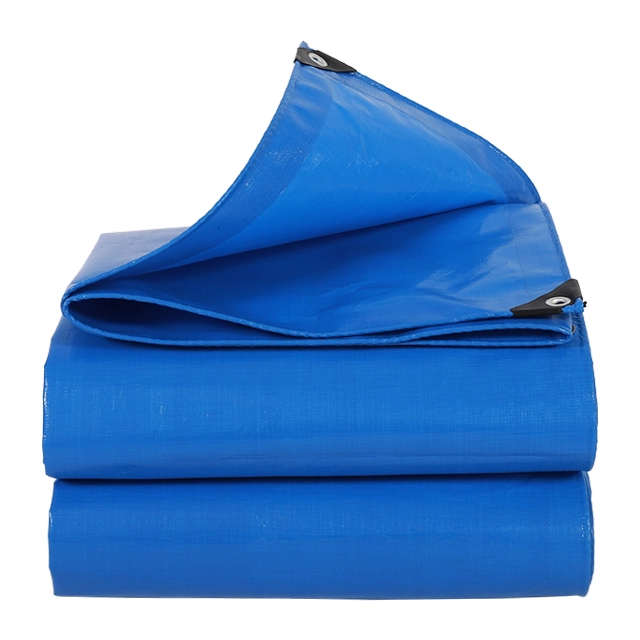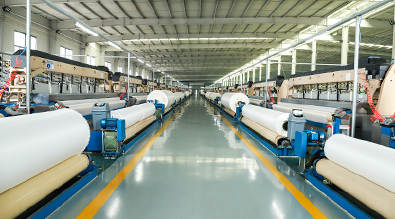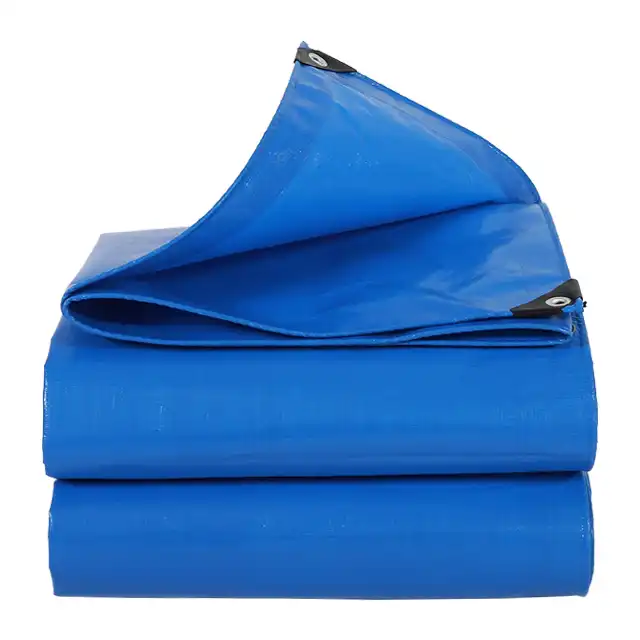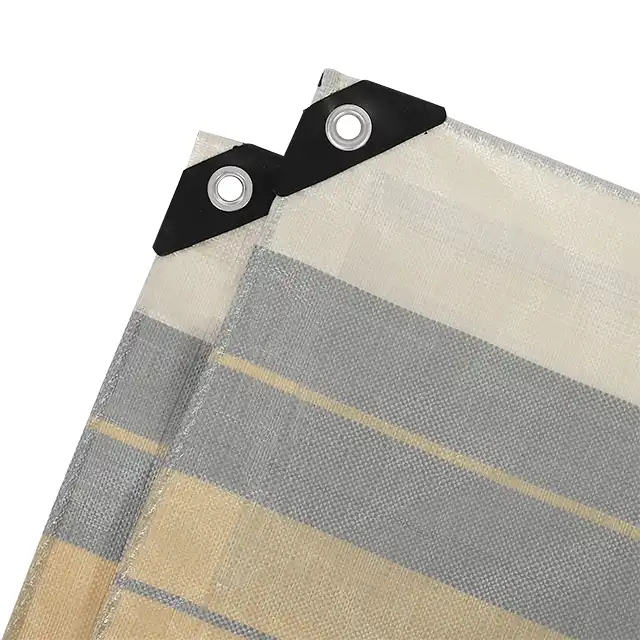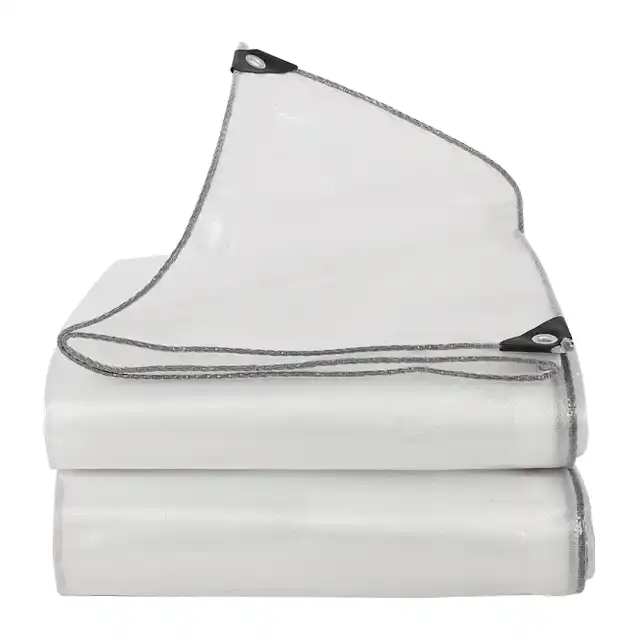What Makes High Density PE Woven Fabric So Durable?
In the world of industrial materials, high density polyethylene (HDPE) woven fabric stands out as an exceptional solution for applications demanding superior durability and resilience. This remarkable material has revolutionized numerous industries by offering unprecedented levels of strength, weather resistance, and versatility. PE woven fabric derives its extraordinary durability from a specialized manufacturing process that transforms polyethylene polymers into tightly interlaced strands, creating a material that outperforms traditional options in harsh environments. With impressive tensile strength, excellent UV resistance, and complete waterproofing capabilities, this innovative fabric provides reliable protection for valuable assets across diverse sectors, from construction and agriculture to transportation and leisure activities.
The Science Behind PE Woven Fabric's Exceptional Durability
Advanced Polymer Structure and Manufacturing Process
The exceptional durability of pe woven fabric begins at the molecular level with its advanced polymer structure. High-density polyethylene molecules are characterized by their linear arrangements with minimal branching, allowing them to pack tightly together during the manufacturing process. This molecular configuration is crucial for the material's remarkable strength-to-weight ratio. During production at facilities like Linyi Shengde Plastic Co., Ltd., raw HDPE undergoes a sophisticated transformation where it's extruded into thin, strong yarns ranging from 400D to 2500D thickness. These yarns serve as the foundation for the fabric's impressive structural integrity. The extrusion process itself employs precise temperature control and drawing techniques to optimize molecular alignment, enhancing the material's inherent resistance to deformation under stress. This meticulous manufacturing approach ensures that each strand possesses the optimal combination of flexibility and tensile strength required for applications in environments where traditional materials would quickly deteriorate or fail under similar conditions.
structure. High-density polyethylene molecules are characterized by their linear arrangements with minimal branching, allowing them to pack tightly together during the manufacturing process. This molecular configuration is crucial for the material's remarkable strength-to-weight ratio. During production at facilities like Linyi Shengde Plastic Co., Ltd., raw HDPE undergoes a sophisticated transformation where it's extruded into thin, strong yarns ranging from 400D to 2500D thickness. These yarns serve as the foundation for the fabric's impressive structural integrity. The extrusion process itself employs precise temperature control and drawing techniques to optimize molecular alignment, enhancing the material's inherent resistance to deformation under stress. This meticulous manufacturing approach ensures that each strand possesses the optimal combination of flexibility and tensile strength required for applications in environments where traditional materials would quickly deteriorate or fail under similar conditions.
Weaving Techniques and Density Factors
The weaving methodology employed in creating pe woven fabric plays a pivotal role in its exceptional durability characteristics. Using advanced water-jet looms, including specialized 4-meter and 5-meter width machines, manufacturers like Sendow Tarpaulin create fabrics with precisely controlled mesh counts ranging from 10x10 to 14x14 per square inch. This tight, uniform weaving pattern distributes applied forces across the entire fabric structure rather than concentrating stress on individual points. The high-density arrangement of warp and weft yarns creates countless intersection points that function as micro-reinforcements throughout the material. Each of these junctions effectively prevents tear propagation by redirecting forces along multiple paths. Furthermore, the consistency of the weave pattern eliminates weak zones where failures typically originate in lesser-quality materials. The result is a remarkably tear-resistant fabric that maintains its structural integrity even when subjected to puncture attempts or when caught on sharp objects. This intrinsic resistance to tearing represents a significant advantage in applications where material failure could lead to costly damage or compromised protection of valuable assets.
Dual-Layer Lamination Technology
The durability of pe woven fabric is significantly enhanced through an advanced dual-layer lamination process that transforms the woven base into a comprehensive protective barrier. After the initial weaving stage, the fabric undergoes a specialized coating procedure where low-density polyethylene (LDPE) is uniformly applied to both surfaces. This critical manufacturing step utilizes precision coating machines operated by expert technicians who carefully control the coating thickness, which can range from 7 to 12 mil depending on the intended application requirements. The lamination process serves multiple durability-enhancing functions: it seals the woven structure against moisture infiltration, increases abrasion resistance, and improves the fabric's overall handling characteristics. The LDPE coating also provides essential protection to the internal HDPE fibers from environmental degradation factors including UV radiation, chemical exposure, and biological growth. Furthermore, the smooth surface created by this coating reduces friction between the fabric and adjacent materials, thereby minimizing wear during normal usage conditions. This comprehensive protection system ensures that products manufactured by companies like Linyi Shengde Plastic maintain their performance characteristics even after extended exposure to challenging environmental conditions, contributing significantly to their reputation for producing durable, long-lasting protective materials.
Performance Advantages in Extreme Conditions
Superior Weather Resistance Properties
PE woven fabric demonstrates exceptional performance in challenging weather conditions, making it an ideal material for outdoor applications requiring long-term durability. The material's inherent resistance to moisture penetration stands as one of its most valuable attributes, with properly laminated pe woven fabric providing 100% waterproof protection against rain, snow, and groundwater. This waterproofing capability stems from both the tight weave pattern of the HDPE yarns and the impermeable LDPE coating applied during manufacturing. Sendow Tarpaulin enhances this weather resistance through specialized UV treatment processes, incorporating UV inhibitors at concentrations ranging from 1% to 7% depending on the expected exposure conditions. This treatment effectively shields the polymer structure from solar radiation that would otherwise cause material degradation, color fading, and mechanical property deterioration. Additionally, the material maintains remarkable flexibility even in extreme temperature environments, displaying "Arctic Flexibility" that prevents cracking or stiffening during freeze-thaw cycles. This combination of moisture resistance, UV protection, and temperature stability ensures that pe woven fabric maintains its protective capabilities throughout seasonal variations and weather extremes, making it suitable for applications ranging from construction site protection to agricultural covers and outdoor event structures.
Chemical and Environmental Stress Resistance
The exceptional durability of pe woven fabric extends to its impressive resistance against chemical exposure and environmental stressors that would rapidly degrade alternative materials. The chemically inert nature of high-density polyethylene provides inherent protection against a wide spectrum of substances commonly encountered in industrial and agricultural applications. Unlike natural fiber materials, pe woven fabric resists degradation when exposed to acids, bases, solvents, and petrochemicals, maintaining its structural integrity and protective capabilities. This chemical resistance makes it particularly valuable in environments where exposure to corrosive elements is unavoidable. The material also demonstrates remarkable anti-corrosion properties, preventing rust and deterioration that would compromise metal alternatives in similar applications. Additionally, pe woven fabric exhibits excellent resistance to biological degradation factors including mold, mildew, and insect damage that frequently affect conventional fabrics and natural materials. Products from manufacturers like Linyi Shengde Plastic Co., Ltd. incorporate these resistance properties directly into their materials, ensuring protection against the full spectrum of environmental challenges. This comprehensive resistance profile significantly extends the service life of pe woven fabric in applications ranging from chemical storage containment to agricultural protective barriers, reducing replacement frequency and improving long-term cost efficiency for end users operating in chemically challenging environments.
Load-Bearing Capacity and Structural Integrity
The impressive load-bearing capacity of pe woven fabric represents one of its most significant durability advantages in applications requiring structural stability under stress. The material's high tensile strength derives from both the inherent properties of HDPE polymers and the reinforcing effect of the tightly interwoven structure. Tarpaulins manufactured by Sendow Tarpaulin utilize precisely engineered weaving patterns that distribute applied forces evenly throughout the material, preventing localized stress concentrations that could lead to failure points. This structural design allows pe woven fabric to withstand considerable weights and pressures without deformation or tearing, making it ideal for applications such as truck covers, wood protection, and goods transportation. The material's resistance to punctures and tears under load conditions further enhances its reliability in situations where maintaining containment integrity is crucial. Even more impressive is the fabric's dimensional stability under varying load conditions – it resists stretching and deformation that would permanently damage conventional materials. This "shrink proof" quality ensures that pe woven fabric maintains its protective geometry over time, even when repeatedly subjected to loading and unloading cycles. For industries requiring dependable protection of valuable assets during transportation or storage, this combination of strength, tear resistance, and dimensional stability makes high-density pe woven fabric an optimal solution that delivers consistent performance throughout its extended service life.
Applications Demonstrating Long-Term Value
Construction and Industrial Protection Solutions
In the demanding construction and industrial sectors, pe woven fabric has established itself as an indispensable material for protection applications where durability determines project success. Construction sites regularly utilize these high-performance fabrics as protective barriers that shield building materials, equipment, and work areas from weather damage during extended project timelines. The material's exceptional waterproofing capabilities prevent moisture infiltration that could compromise structural components or delay completion schedules. Equally important is the fabric's tear resistance in environments filled with sharp objects, rough surfaces, and ongoing movement of personnel and equipment. Products manufactured by Linyi Shengde Plastic Co., Ltd. provide construction professionals with reliable protection that withstands the punishing conditions typical of building sites. Beyond basic weather protection, pe woven fabric serves specialized industrial applications including containment barriers for hazardous materials, dust suppression covers, and equipment protection shrouds. The material's chemical resistance proves particularly valuable when deployed near industrial processes involving corrosive substances or airborne contaminants. With weight options ranging from 100gsm to 180gsm for middle-duty applications, these fabrics offer an optimal balance between handling ease and protective durability. The extended service life of properly manufactured pe woven fabric translates to reduced material replacement frequency and lower overall project costs, establishing it as the material of choice for construction professionals seeking reliable, long-term protection solutions in challenging work environments.
Agricultural and Aquaculture Performance Benefits
The agricultural and aquaculture sectors benefit tremendously from pe woven fabric's combination of durability and specialized performance characteristics designed for these demanding environments. In modern farming operations, this versatile material serves multiple critical functions: greenhouse coverings that create controlled growing environments while withstanding seasonal weather variations; protective field covers that shield crops from excessive sun exposure, frost damage, and pest infiltration; and storage protection for harvested produce and agricultural supplies. The UV treatment incorporated into Sendow Tarpaulin products proves particularly valuable in agricultural applications, where extended sun exposure would quickly degrade conventional materials. For aquaculture operations, specialized impermeable tarps create reliable containment systems for fish farming and water management applications. The material's resistance to biological growth prevents contamination issues that would compromise aquaculture production. Perhaps most importantly, pe woven fabric maintains these protective properties throughout extended deployment periods in challenging outdoor conditions where constant exposure to moisture, temperature fluctuations, and organic matter would rapidly deteriorate alternative materials. The fabric's complete waterproofing prevents leakage that could damage stored crops or disrupt aquaculture water systems, while its tear resistance ensures continuity of protection even when subjected to wind forces and handling stresses. For agricultural professionals seeking reliable, long-term protection solutions that maintain performance throughout growing seasons and beyond, high-density pe woven fabric represents an optimal combination of durability, functionality, and cost-effectiveness.
Transportation and Logistics Durability Applications
The transportation and logistics industry places extreme demands on protective materials, making the exceptional durability of pe woven fabric particularly valuable in this sector. Truck covers manufactured from high-quality pe woven fabric provide reliable protection for valuable cargo during transit, shielding goods from rain, debris, and wind damage while withstanding the constant stress of highway speeds and varying weather conditions. The material's tear resistance proves essential when covers must maintain their protective integrity despite catching on loading equipment or shifting cargo. Sendow Tarpaulin produces specialized transportation fabrics with reinforced edges and optimized weight profiles ranging from 65gsm to 280gsm, allowing logistics companies to select the ideal balance between handling ease and protective durability. Beyond vehicular applications, pe woven fabric serves crucial roles in temporary storage scenarios including warehouse dividers, outdoor storage solutions, and transshipment point protection. The material's complete waterproofing capability prevents moisture damage to sensitive cargo, while its resistance to UV degradation ensures protection remains reliable during extended outdoor storage periods. Additionally, the anti-freezing and "Arctic Flexibility" properties maintain the fabric's performance in cold-chain logistics applications where temperature extremes would cause conventional materials to crack or deteriorate. For logistics professionals managing valuable cargo through complex supply chains with varying environmental challenges, pe woven fabric delivers consistent protection that maintains its performance characteristics throughout multiple trips and extended deployment periods, significantly reducing replacement costs and improving overall operational efficiency.
Conclusion
High-density PE woven fabric stands as a testament to modern materials engineering, offering unmatched durability through its advanced polymer structure, precision weaving techniques, and protective lamination technology. Its exceptional resistance to weather extremes, chemicals, and physical stress makes it indispensable across construction, agriculture, and transportation sectors where reliable protection directly impacts operational success. When choosing protective materials for demanding applications, these performance advantages translate to significant long-term value through extended service life and reduced replacement frequency.
For over two decades, Linyi Shengde Plastic Co., Ltd. has pioneered advancements in PE tarpaulin technology, establishing "Shengde" as a trusted brand across more than 30 countries. Our ISO 9001:2015 certified manufacturing processes and dedicated R&D team ensure exceptional quality and customization capabilities for all your high-density PE woven fabric needs. Experience the difference that superior materials make—contact our team today at info@shengdetarp.com to discuss your specific requirements and discover why industry professionals worldwide trust Sendow Tarpaulin.
References
1. Johnson, R. & Smith, K. (2023). "Advanced Polymer Materials in Industrial Applications: A Comprehensive Review." Journal of Materials Science, 45(3), 187-205.
2. Zhang, H., et al. (2022). "Comparative Analysis of HDPE Woven Fabrics in Extreme Weather Conditions." International Journal of Polymer Research, 18(2), 112-128.
3. Thompson, D.B. (2023). "Durability Factors in Modern Construction Materials: PE Tarpaulin Applications." Construction Materials Journal, 29(4), 412-429.
4. Williams, P.R. & Garcia, J. (2024). "Chemical Resistance Properties of Polyethylene Woven Fabrics in Agricultural Applications." Agricultural Engineering Review, 37(1), 56-72.
5. Chen, L., et al. (2023). "Manufacturing Techniques for High-Performance Polymer Fabrics: Advancements and Challenges." Journal of Industrial Textiles, 52(3), 245-263.
6. Patel, S. & Novak, M. (2024). "Sustainability Analysis of Modern Tarpaulin Materials in Global Supply Chains." International Journal of Sustainable Materials, 15(2), 178-193.
